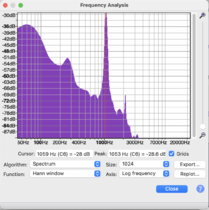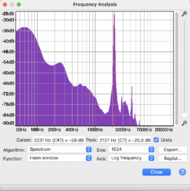Project 8: Acoustics of Whistling
Introduction and Cultural Context
Whistling, as a practice, is hard to trace the origins of. Something so embedded in various cultures, its roots can likely be traced back to a similar time as when humans first began speaking. [1]
Whistling in humans refers to creating a small opening with your lips, and then blowing air out, or, sucking air through this opening/hole. This produces a sound that can be altered/manipulated/changed based on varying skill levels and other features. Like many other skills, it can be mastered to incredible extents, as will be discussed later. A phenomenon that is intuitive for some, and learned for others, whistling is incredibly popular, and different tones and pitches of it can be distinguished, and, are recognizable in different ways. For example, the catcalling whistle is characterized by a quick burst of a high-pitched whistle, followed by a brief pause, and then a similarly pitched whistle again. This is widely recognizable for its pitch and sequence.
As mentioned, while it is difficult to trace the origins of human whistling, a similar mechanism, the whistle, is easier to trace. The whistle is thought to have originated in China, roughly 5,000 years ago, though this is hard to say with certainty. It is believed that the whistle and whistling were used for mainly, safety purposes, such as to alert citizens of impending threats such as war.[2][3]
The ability to whistle is not restricted to humans. Many different species of animals whistle too!
On land, this can be seen in animals such as the Walnut Sphinx Caterpillar, which produces a whistle-like sound whenever it feels threatened. In technical terms, these sounds are referred to as 'spiracles'. [4]
Other examples of land animals that whistle are Guinea Pigs and Dholes. Dholes, part of the caninae subfamily, use whistling when hunting. This way, they can coordinate their movements, a skill necessary for their territory, the forest, where they may not be able to see each other at all times.
As for underwater, one example of whistling can be seen in the Bottlenose Dolphin, who whistle for purposes such as reuniting after being separated, and sometimes, as a mating call. These forms of echolocation can be heard here:
Overall, whistling is a phenomenon practiced by many, both casually, and professionally, and is not exclusive to humans! [5]
Whistled Languages
Whistled languages are a method of communication that uses whistling to simulate words and are found in many parts of the world [6]. It is usually found in communities living in mountainous or dense forests where the local population needed an alternative method to communicate across long distances, and around 80 cultures worldwide have developed a whistled form of their language.
Rather than being a replacement, they accompany and rely on spoken languages, as a “whistled register”. A well-known example would be the Silbo Gomero[7], directly translated as the “Gomeran whistle” of the Canary Islands. Using their hands, the language includes whistles for 2 vowels and 4 consonants, distinguished by pitch and able to cover up to 5km through the mountains. As of 1999, it is taught in schools and remains an important cultural heritage for the islanders.
Types of Whistling[8]
Pucker Whistling
The most common form of whistling; air is either expelled or sucked in through pursed lips to produce sound.
Finger Whistling
Also known as "wolf whistling", this form of whistling involves inserting fingers in the mouth to shape the opening, resulting in a more forceful and loud sound.
Palatal/Roof Whistling
This form involves air to be pushed out between the roof of the mouth and tongue to produce sound. This requires more practice.
Hand Whistling
Requires your hands to be cupped together, and air to be blown out of the mouth into the resonant chamber formed by your hands.
Teeth Whistling
A more difficult form of whistling; this requires the whistler to draw air in through the central incisors.
Throat/Laryngeal Whistling
The mouth is kept closed and air is forced between the tongue and the back of the throat.
Bottom-Lip Whistling
Performed by sucking air inside the mouth; the turbulence is created by pinching the center of the bottom lip, resulting in a piercing sound.
The Physics of Whistling
There is no definitive answer regarding how physics of whistling work, and it is not a topic with a lot of research on it. That being said, certain theories and principles do work in explaining whistling to a certain extent!
Helmholtz Resonance + Chamber [9][10][11][12][13]
Helmholtz Resonance is a phenomenon named after German physicist and physician, Hermann von Helmholtz.
Helmholtz Resonance, put simply, is applied to objects with cavities, or openings. Typically, this is often applied to instruments such as guitars, and, with tuning forks. Tuning forks are typically attached to boxes, and these boxes are designed so that their natural frequency is the same frequency that the tuning fork oscillates at, and so, with resonance, can transfer vibrations to the air inside the box. In whistling, this 'cavity' is created by our mouths when we pucker it and create a small opening.
When you whistle, the air near your mouth vibrates at the same frequency as when you're whistling, which creates resonance. This 'resonance chamber' is created in our throats, and this transfers the sound through resonance, or, the phenomenon that something vibrating at its natural frequency, causes something else of the same frequency to vibrate with an increased amplitude due to the transfer of this energy. This resonance, and this vibration, is at a specific frequency, and can be altered based on various factors. For example, the pitch of your whistling can be altered by manipulating your tongue's position. By moving it upward or downward, you will change the size of the resonance chamber, and hence, the pitch of your whistling.
Whistling Visualized
Whistling, as a sound, is a musical tone, with a fundamental frequency, followed by harmonics that are multiples of this fundamental, the phenomenon represented by Fourier's Theorem. This becomes evident when we record the sound of someone whistling on an app like 'Audacity'. When recorded, whistling produces a sine wave, or a sinusoidal wave, with periodic, repeating oscillations. These waves comprise of characteristics that can be changed, such as their amplitude, which can vary based on volume, their frequency, which can vary based on pitch, and their timbre, which can vary based on the 'quality' of the sound. In essence, considering that whistling produces a sinusoidal wave, it is a pure tone, and, a musical note.
For example, when recording the whistling of someone with an objectively 'deeper' or 'lower-pitched' voice, versus the whistling of someone with an objectively 'higher' or 'higher-pitched' voice, the changes in frequency are particularly notable. All examples are done with pucker whistling.
In Fig. 1 is the sine wave on 'Audacity' produced by someone with a 'deeper' voice. To calculate the frequency, we recorded seven periods in 0.006 seconds. Our calculations were as follows:
- 0.006/7 = 0.00085714285
- f = 1/ 0.00085714285
- f = 1166.66667639
- f ≈ 1167Hz
This corresponds to the note D in the 6th octave.
In Fig. 2, we can see the sine wave produced by someone with a 'higher' voice. To calculate the frequency, we recorded twelve periods in the span of 0.005 seconds. Our calculations were as follows:
- 0.005/12 = 0.00041666666
- f = 1/0.00041666666
- f = 2400.0000384
- f ≈ 2400Hz
This corresponds to the note D in the 7th octave.
Although unintentional, we can see now that these two separate individuals recorded the same note, but in different octaves. From this we can infer that maybe it is possible that most people's natural whistling register is at the note, D.
As can be seen, whistling is a musical tone, and, a higher-pitched whistle results in a higher frequency, and a lower-pitched whistle results in a lower one.
Whistling Visualized 2
In music, an octave refers to a note with a frequency that is two times higher, or half of the other note.
Two octaves of the same note, for example, could be D3, and then D4. To emulate this on 'Audacity', we attempted to record octaves of the same note, so that when we plot the spectrum, we can see it in the fundamental frequencies. These examples were done with pucker whistling by the same person.
In Figure 1, we can see the plotted spectrum of the note C6, as indicated by the fundamental frequency. The note is 1053Hz. In Figure 2, we can see the sinusoidal wave function of C6, in its nature as an oscillating, repeating function, again emphasizing that whistling produces a musical tone/note.
In Figure 3, we see the plotted spectrum of the note C7, an octave of the note C, and an octave directly above C6, as indicated by the fundamental frequency. The frequency of this note is 2127Hz. In Figure 4, we can see the sine wave for this.
Whistling in Media
Palette Whistlers:
https://www.youtube.com/watch?v=PXJIBccgnoU, https://www.youtube.com/watch?v=L64c5vT3NBw
Double Note Whistlers:
https://www.youtube.com/watch?v=PXJIBccgnoU, https://www.youtube.com/watch?v=0-ljtP6WJrI
References
- ↑ Spinney, Laura (September 25th, 2021). "Could whistling shed light on the origins of speech?". Check date values in:
|date=(help) - ↑ Wikipedia contributors (February 19th, 2024). "Whistle". Check date values in:
|date=(help) - ↑ The Whistle Shop contributors (1998–2021). "History of the Whistle".CS1 maint: date format (link)
- ↑ Coin, Patrick (June 8th, 2004). "Species Amorpha juglandis - Walnut Sphinx - Hodges#7827". Check date values in:
|date=(help) - ↑ Bates, Mary (April 25th, 2017). "Whistling Caterpillars And 5 More Surprisingly Musical Species". Check date values in:
|date=(help) - ↑ UCL Psychology and Language Sciences (12/15/2021). "Whistled Languages". UCL. Check date values in:
|date=(help) - ↑ Gouvernement des Canaries (2008). "Whistled language of the island of La Gomera (Canary Islands), the Silbo Gomero". UNESCO.
- ↑ Edinburgh City Libraries (October 9, 2023). "The Art of Whistling". Tales of One City.
- ↑ Wolfe, Joe. "Helmholtz Resonance".
- ↑ Britannica contributors. "The Helmholtz resonator".
- ↑ Pressbooks contributors. "Helmholtz resonators".
- ↑ Britannica contributors. "Helmholtz resonator".
- ↑ Stromberg, Joseph (August 13th, 2015). "I thought I was incapable of whistling. Then I learned how". Check date values in:
|date=(help)







